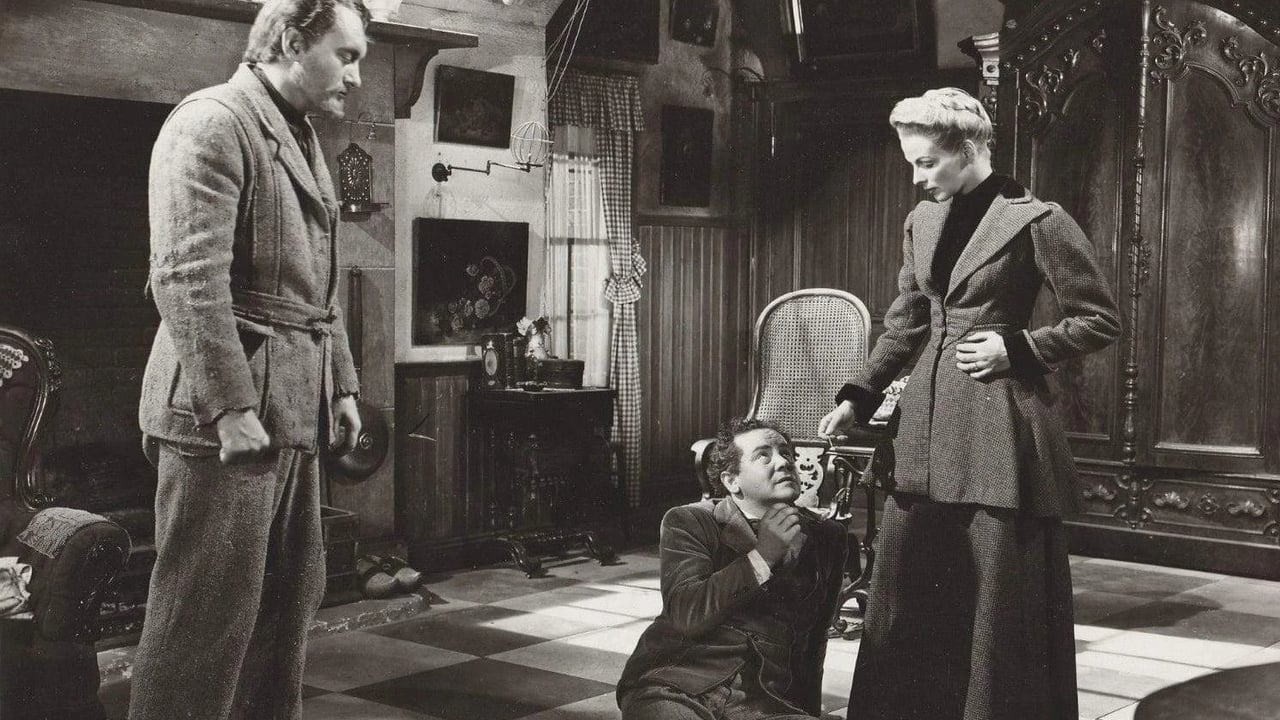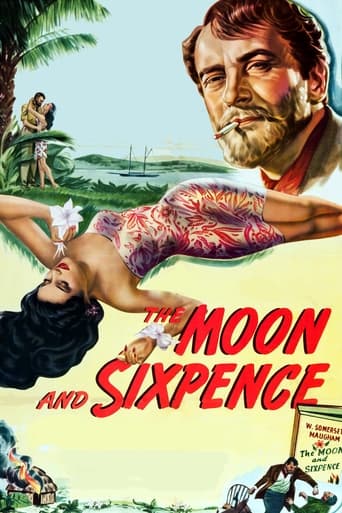

Please don't spend money on this.
... View MoreI gave this film a 9 out of 10, because it was exactly what I expected it to be.
... View MoreA lot of perfectly good film show their cards early, establish a unique premise and let the audience explore a topic at a leisurely pace, without much in terms of surprise. this film is not one of those films.
... View MoreA movie that not only functions as a solid scarefest but a razor-sharp satire.
... View MoreAs a George Sanders fan I was disappointed to see him in this poorly written, directed and acted film. Not only is he insensitive, he is unsympathetic. In 'Samson and Delilah' he plays an antagonist. Because the script is good and the direction is at DeMille's best, Sanders' performance is sympathetic, and you like both the protagonist and the antagonist. In 'Ivanhoe' he plays the antagonist, Bois Guilbert. He is likable and sympathetic because the writing is good, and Richard Thorpe's directing is at his best. Therefore Sanders' performance is sympathetic. This is a successful anti-hero, but his performance in this film is anti- sympathetic. He is totally unlikeable, and there are no redeeming qualities in the film whatsoever. I'll have to read the novel to see if it is as disappointing as the film.
... View More*Spoiler/plot- The Moon and Sixpence, 1942. Possibly inspired from Paul Gauguin's life life living in Polynesia. The story of a fictitious 'Charles Strickland', a middle-aged stockbroker who abandons his middle-classed life, his family, his duties to start painting in Tahiti. He always wanted to paint and exile himself from society. He's personally a terrible to others in his doings, an awful human being. He learns to be devoted to his ideal: beauty while battling leprosy everyday.*Special Stars- George Sanders, Herbert Marshal, Doris Dudley, Albert Basserman, Florence Bates, Elena Verdugo.*Theme- Art can come from the knowledge of ugliness and pain.*Trivia/location/goofs- B & W. Made during ww2. B&W until art and art set burning in fired family hut. ending.*Emotion- A rich film of drama and painting. Interesting bit of historic storytelling with an interesting use of color inside a black and white film to highlight the Polynesian painting of Gauguin.*Based On- Loosely based on the life of Gauguin, the screenplay by Albert Lewin is based on the book by Somerset Maugham.
... View MoreIf what you are looking for is a standard film story about a painter, look elsewhere. This is a strange story and a strange movie. But don't take that as criticism. I found it very compelling.They say that the story was about Gauguin...and if so, then I can't say he was a very admirable fellow. Here "he's" Charles Strickland, a middle-aged businessman who abandons his wife and children so he can paint in Paris. His tale is told through the eyes of Herbert Marshall. Could there be a worse human being than George Sanders as Charles Strickland. Virtually no redeeming qualities...at least until he gets married to a girl in the South Pacific. Of course, life always pays one back, and Strickland declines into leprosy.The cast here is intriguing. This is one of the best -- though not likable -- performances given by George Sanders. Herbert Marshall is perfect as the eyes of the story (watch for scenes where he is walking...you can notice a limp due his real artificial leg). Elena Verdugo is interesting as the South Seas girl...you may remember her best from her recurring role in "Marcus Welby, M.D." Florence Bates (usually the nagging mother-in-law type) has, perhaps, the most unusual role of her career. Albert Bassermann, as the South Seas doctor, is interesting, though I'm not sure he was any great actor. But his career story is something worth looking up on Wikipedia.I guess we should thank the George Eastman House for restoring this film, although I'm not sure if the nitrate copies were so badly decomposed to explain the relatively poor quality of the print (as shown on TCM), or whether they just did a poor job of restoration. The images are not crisp, and the color scenes in Tahiti are terribly deteriorated.Nevertheless, this is a film to watch. It's unusual and intriguing.
... View MoreThe story alone is worth viewing. The very idea of a person abandoning their family in order to follow one's dream, is compelling enough. George Sander's performance as well as Herbert Marshall as Somerset Maughm are both fist rate. No one could have done a finer job at playing the tortured cad then Sanders. If they had another one of those silly top 100 lists, this one for best type casting in a film about cads, then Sanders would win in a trot. He was in real life it appears, the very cad that he played so convincingly on screen. A book was even written about him by an actor friend, Brian Ahearne. The title of the book is "A Dreadful Man". The actor Ronald Coleman would not even allow Sanders in his presence, as he found his disdain and pessimism to much to bear. At the age of 65 Sanders committed suicide in a Paris hotel room just as he had promised actor David Niven years earlier, claiming that by that time he would no longer have interest in women or anything else. (Consult Niven's book "Bring On The Empty Horses") I can understand one user's previous comment about this being Sanders only great role. But Mr. Sanders won an Oscar for playing another cad, the rascal theater critic in "All About Eve". One of my favorite lines in that movie is when he replies to a very beautiful young starlet(Marilyn Monroe) who he has accompanied to a dinner party saying "You have a point. An idiotic one, but a point none the less".
... View More